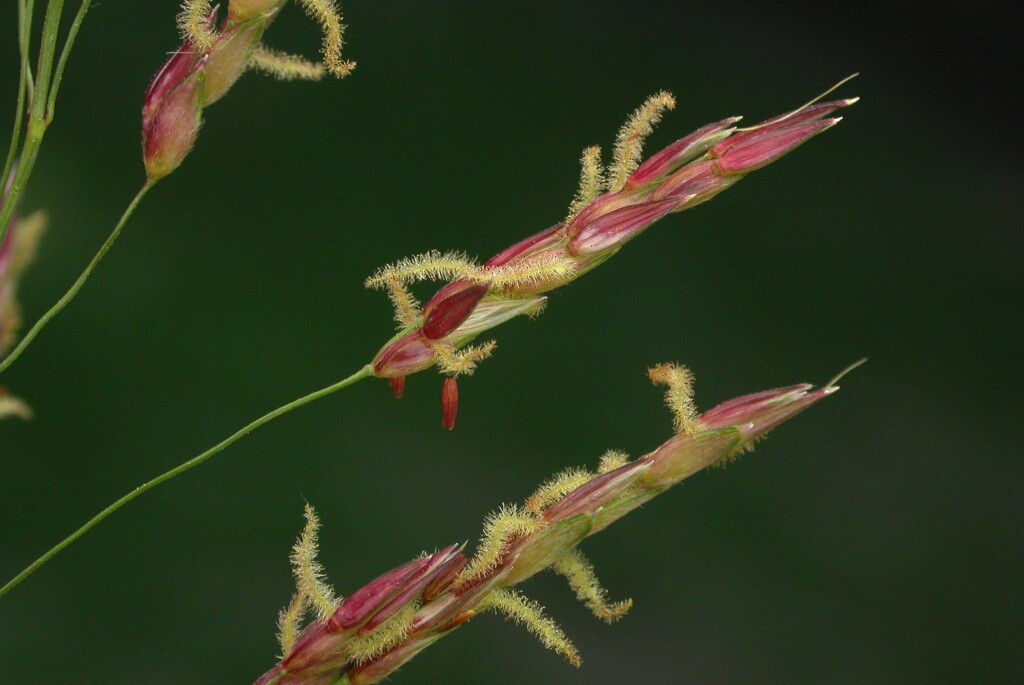Sorghum halepense
(L.) Pers. Johnson GrassRobust, rhizomatous perennial, culms erect, to c. 150 cm high. Leaf-blades flat, to c. 50 cm long and 1.8 cm wide, glabrous, finely scabrous along margins; ligule a fringed membrane to c. 5 mm long. Inflorescence a pyramidal panicle to c. 20 cm long and 12 cm wide; pedicellate spikelets male only, c. 5 mm long, often purplish; bisexual spikelets subequal to sterile ones but broader and dorsiventrally flattened; glumes slightly hairy, hardened and shining dark brown at maturity; sterile and fertile lemma thinly membranous, slightly shorter than glumes, fertile lemma often with terminal, once bent, twisted awn c. 12 mm long, usually deciduous before spikelet matures; palea c. half as long as lemma, remaining closely appressed to grain. Flowers Nov.–May.
MuM, Wim, VVP, VRiv, MSB, RobP, MuF, GipP, Gold, CVU, NIS, EGU, HNF, Strz. All mainland States. Native to the Mediterranean area. Locally abundant in irrigated areas of the Murray-Goulburn and Wimmera river systems (e.g. Robinvale, Horsham, Shepparton etc.), sporadically occurring elsewhere (e.g. Melbourne Cemetery grounds, Warragul), often difficult to eradicate. Occasionally grown as a perennial fodder, but may become toxic to stock due to production of cyanic compounds.
Walsh, N.G. (1994). Poaceae. In: Walsh, N.G.; Entwisle, T.J., Flora of Victoria Vol. 2, Ferns and Allied Plants, Conifers and Monocotyledons, pp. 356–627. Inkata Press, Melbourne.
 Spinning
Spinning



